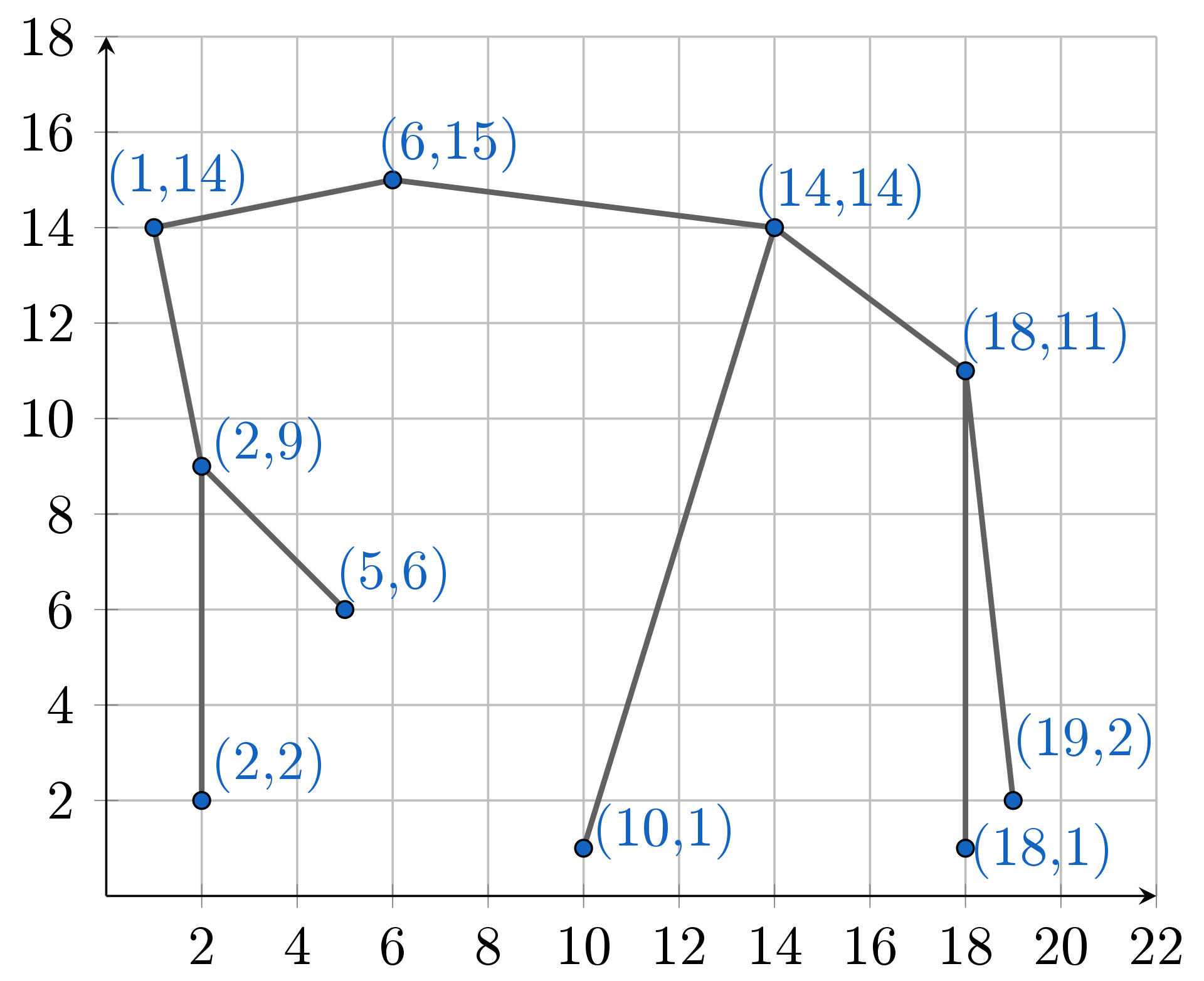Go 语言作为一个原生支持用户态进程(Goroutine)的语言,当提到并发编程、多线程编程时,往往都离不开锁这一概念。锁是一种并发编程中的同步原语(Synchronization Primitives),它能保证多个 Goroutine 在访问同一片内存时不会出现竞争条件(Race condition)等问题。
Go 语言在 sync 包中提供了用于同步的一些基本原语,包括常见的 sync.Mutex、sync.RWMutex、sync.WaitGroup、sync.Once 和 sync.Cond。本文将会分析golang基于信号的底层实现逻辑,源码文件runtime/sema.go。
代码分为:
- 链接函数,声明对sync包的linkname
- 信号树堆,通过信号量管控阻塞协程
- 通知列表,用于条件变量的单播和广播
链接函数
连接函数重定向,将sync包中所用到的函数链接到底层runtime实现函数:
- 信号树堆用户锁、读写锁、文件锁的阻塞管理
- 通知列表用于条件变量的通知单个和通知所有
//go:linkname poll_runtime_Semacquire internal/poll.runtime_Semacquire
func poll_runtime_Semacquire(addr *uint32) {}
//go:linkname poll_runtime_Semrelease internal/poll.runtime_Semrelease
func poll_runtime_Semrelease(addr *uint32) {}
//go:linkname sync_runtime_Semacquire sync.runtime_Semacquire
func sync_runtime_Semacquire(addr *uint32) {}
//go:linkname sync_runtime_Semrelease sync.runtime_Semrelease
func sync_runtime_Semrelease(addr *uint32, handoff bool, skipframes int) {}
//go:linkname sync_runtime_SemacquireMutex sync.runtime_SemacquireMutex
func sync_runtime_SemacquireMutex(addr *uint32, lifo bool, skipframes int) {}
//go:linkname sync_runtime_SemacquireRWMutexR sync.runtime_SemacquireRWMutexR
func sync_runtime_SemacquireRWMutexR(addr *uint32, lifo bool, skipframes int) {}
//go:linkname sync_runtime_SemacquireRWMutex sync.runtime_SemacquireRWMutex
func sync_runtime_SemacquireRWMutex(addr *uint32, lifo bool, skipframes int) {}
//go:linkname notifyListAdd sync.runtime_notifyListAdd
func notifyListAdd(l *notifyList) uint32 {}
//go:linkname notifyListWait sync.runtime_notifyListWait
func notifyListWait(l *notifyList, t uint32) {}
//go:linkname notifyListNotifyAll sync.runtime_notifyListNotifyAll
func notifyListNotifyAll(l *notifyList) {}
//go:linkname notifyListNotifyOne sync.runtime_notifyListNotifyOne
func notifyListNotifyOne(l *notifyList) {}
//go:linkname notifyListCheck sync.runtime_notifyListCheck
func notifyListCheck(sz uintptr) {}
//go:linkname sync_nanotime sync.runtime_nanotime
func sync_nanotime() int64 {}信号树堆
树堆
横坐标表示值,纵坐标表示优先级,以优先级限制树的层高
查找时使用值为索引,插入删除时优先级控制树形状
// 信号表
var semtable semTable
// Prime to not correlate with any user patterns.
const semTabSize = 251
// 信号表 固定大小
type semTable [semTabSize]struct {
root semaRoot
pad [cpu.CacheLinePadSize - unsafe.Sizeof(semaRoot{})]byte
}
type semaRoot struct {
// lock 锁
// treap 树堆 存等待的g tree-heap
// nwait 等待者的个数
lock mutex
treap *sudog // root of balanced tree of unique waiters.
nwait atomic.Uint32 // Number of waiters. Read w/o the lock.
}信号标志
标志事件类型:阻塞事件和锁事件,用于记录事件日志
type semaProfileFlags int
const (
semaBlockProfile semaProfileFlags = 1 << iota
semaMutexProfile
)信号树堆示意图
添加信号树堆
将当期协程存放入树堆中,等待被唤醒
// 信号量处理 等待被唤醒
func semacquire1(addr *uint32, lifo bool, profile semaProfileFlags, skipframes int, reason waitReason) {
gp := getg()
if gp != gp.m.curg {
throw("semacquire not on the G stack")
}
// Easy case.
if cansemacquire(addr) {
// 如果有正在执行 semrelease1 直接获取信号量 返回
return
}
s := acquireSudog()
root := semtable.rootFor(addr)
t0 := int64(0)
s.releasetime = 0
s.acquiretime = 0
s.ticket = 0
if profile&semaBlockProfile != 0 && blockprofilerate > 0 {
// 阻塞事件
t0 = cputicks()
// 阻塞没有释放时间
s.releasetime = -1
}
if profile&semaMutexProfile != 0 && mutexprofilerate > 0 {
// 锁事件
if t0 == 0 {
t0 = cputicks()
}
// 记录获取时间
s.acquiretime = t0
}
for {
// 锁住
lockWithRank(&root.lock, lockRankRoot)
// 添加root的等待者
root.nwait.Add(1)
if cansemacquire(addr) {
// 再次检测是否有正在释放的信号量
root.nwait.Add(-1)
unlock(&root.lock)
break
}
// 入队 休眠
root.queue(addr, s, lifo)
// 等待被唤醒
goparkunlock(&root.lock, reason, traceEvGoBlockSync, 4+skipframes)
if s.ticket != 0 || cansemacquire(addr) {
// 已经获取过 或 addr 还可以获取 sema
break
}
}
// 被唤醒后是否记录阻塞事件
if s.releasetime > 0 {
// 尝试记录阻塞事件
blockevent(s.releasetime-t0, 3+skipframes)
}
releaseSudog(s)
}移除信号树堆
唤醒等待协程
// 解锁单个 addr 的等待 g 并唤醒该 g
func semrelease1(addr *uint32, handoff bool, skipframes int) {
// 取根结点
root := semtable.rootFor(addr)
// 增加信号量
atomic.Xadd(addr, 1)
// 检测操作必须在 xadd 后面
// 避免错过唤醒
// 这边加上 那边获取
if root.nwait.Load() == 0 {
// 没有等待的 g 直接返回
return
}
lockWithRank(&root.lock, lockRankRoot)
if root.nwait.Load() == 0 {
// 二次检测
unlock(&root.lock)
return
}
// 从树中弹出一个 sudog
s, t0 := root.dequeue(addr)
if s != nil {
// 弹出有效
root.nwait.Add(-1)
}
unlock(&root.lock)
if s != nil { // May be slow or even yield, so unlock first
acquiretime := s.acquiretime
if acquiretime != 0 {
// 有 acquiretime 表示是锁事件 尝试记录锁事件
mutexevent(t0-acquiretime, 3+skipframes)
}
if s.ticket != 0 {
throw("corrupted semaphore ticket")
}
if handoff && cansemacquire(addr) {
// 只有外部需要让出调度时才会获取信号量
// 标记下次执行 并且 addr还可以被获取
s.ticket = 1
}
// 唤醒s 加入就绪队列
readyWithTime(s, 5+skipframes)
if s.ticket == 1 && getg().m.locks == 0 {
// 标记为1 并且 m 没有被其他 g 锁住
// 让出 m 等待下次调度
// 即直接调度 s 对应的 g
// 请注意,继承了我们的时间片:这是可取的,以避免一个高度竞争的信号量无限期地占用 P
// goyield 类似于 Gosched,但它会发出一个“抢占式”跟踪事件
// 更重要的是,将当前 G 放在本地 runq 而不是全局 runq 上
// 我们只在饥饿状态下执行此操作(handoff=true)
// 因为在非饥饿情况下,在我们让出调度时,其他服务员可能会获取信号量,这将是一种浪费
// 相反,我们等待进入饥饿状态,然后我们开始直接切换票和 P
goyield()
}
}
}信号入队
// 将当前的 s 入队
// 只有新插入的 addr 才会生成 ticket
func (root *semaRoot) queue(addr *uint32, s *sudog, lifo bool) {
s.g = getg()
s.elem = unsafe.Pointer(addr)
s.next = nil
s.prev = nil
// 先查找有没有相同锁地址 有就按规则插入后返回
var last *sudog
// var pt **sudog
pt := &root.treap
for t := *pt; t != nil; t = *pt {
// 遍历所有节点 查找 addr 是否已经入 treap
if t.elem == unsafe.Pointer(addr) {
// Already have addr in list.
if lifo {
// 插入队首
// Substitute s in t's place in treap.
// 赋值pt
*pt = s
// 交接二叉树链接信息
s.ticket = t.ticket
// 使用最开始的获取时间
s.acquiretime = t.acquiretime
s.parent = t.parent
s.prev = t.prev
s.next = t.next
if s.prev != nil {
s.prev.parent = s
}
if s.next != nil {
s.next.parent = s
}
// 修正队首尾
// Add t first in s's wait list.
s.waitlink = t
s.waittail = t.waittail
if s.waittail == nil {
s.waittail = t
}
// 清空原树节点 树相关信息
t.parent = nil
t.prev = nil
t.next = nil
t.waittail = nil
} else {
// 直接插入队尾
// Add s to end of t's wait list.
if t.waittail == nil {
t.waitlink = s
} else {
t.waittail.waitlink = s
}
t.waittail = s
s.waitlink = nil
}
// 修改后 就返回
return
}
// 向下个节点偏移 根据地址 决定向前向后
last = t
if uintptr(unsafe.Pointer(addr)) < uintptr(t.elem) {
pt = &t.prev
} else {
pt = &t.next
}
}
// 新的锁就新建一个二叉树节点
// ticket 有与0作比较 所以必须大于0
s.ticket = fastrand() | 1
// last 作为新叶子节点的父节点
s.parent = last
// 将 s 置入 pt 插入新节点
*pt = s
// 插入新节点 需要保持优先级的平衡性
// 利用 ticket 确定优先级
for s.parent != nil && s.parent.ticket > s.ticket {
if s.parent.prev == s {
// s 是左子树 就右旋
root.rotateRight(s.parent)
} else {
if s.parent.next != s {
panic("semaRoot queue")
}
// s 是右子树 就左旋
root.rotateLeft(s.parent)
}
}
}信号出队
// 出队单个sudog
// 如果正在分析 sudog 则 dequeue 将返回唤醒它的时间
// 否则返为0
// dequeue searches for and finds the first goroutine
// in semaRoot blocked on addr.
// If the sudog was being profiled, dequeue returns the time
// at which it was woken up as now. Otherwise now is 0.
func (root *semaRoot) dequeue(addr *uint32) (found *sudog, now int64) {
ps := &root.treap
s := *ps
for ; s != nil; s = *ps {
if s.elem == unsafe.Pointer(addr) {
// 找到才执行出队操作
goto Found
}
if uintptr(unsafe.Pointer(addr)) < uintptr(s.elem) {
ps = &s.prev
} else {
ps = &s.next
}
}
// 找不到直接返回
return nil, 0
Found:
now = int64(0)
if s.acquiretime != 0 {
now = cputicks()
}
if t := s.waitlink; t != nil {
// 有链表元素 直接移除队首元素 不用删树节点
*ps = t
t.ticket = s.ticket
t.parent = s.parent
t.prev = s.prev
if t.prev != nil {
t.prev.parent = t
}
t.next = s.next
if t.next != nil {
t.next.parent = t
}
if t.waitlink != nil {
t.waittail = s.waittail
} else {
t.waittail = nil
}
// 重置获取时间
t.acquiretime = now
s.waitlink = nil
s.waittail = nil
} else {
// 没有后续链表元素 需要删除树节点 进行树的再平衡
// 向下旋转为叶子节点 然后删除
for s.next != nil || s.prev != nil {
// 有非空子树 就进行旋转 将 s 旋转为叶子节点
if s.next == nil || s.prev != nil && s.prev.ticket < s.next.ticket {
// 左右子树皆不为空时 需要判断 左右节点的 ticket 保证优先级高度
root.rotateRight(s)
} else {
// 否则 左旋
root.rotateLeft(s)
}
}
// 左右子树皆为空 即叶子节点 可以安全删除
// Remove s, now a leaf.
if s.parent != nil {
// 有父节点 移除父节点指向
if s.parent.prev == s {
s.parent.prev = nil
} else {
s.parent.next = nil
}
} else {
// 没有父节点 说明是最后一个节点
root.treap = nil
}
}
// 清理 s 无关数据
s.parent = nil
s.elem = nil
s.next = nil
s.prev = nil
// 出队清空 ticket
s.ticket = 0
return s, now
}树堆左旋
/*
x y
/ \ / \
a y --> x c
/ \ / \
b c a b
*/
// rotateLeft rotates the tree rooted at node x.
// turning (x a (y b c)) into (y (x a b) c).
func (root *semaRoot) rotateLeft(x *sudog) {
// p -> (x a (y b c))
p := x.parent
y := x.next
b := y.prev
y.prev = x
x.parent = y
x.next = b
if b != nil {
b.parent = x
}
y.parent = p
if p == nil {
root.treap = y
} else if p.prev == x {
p.prev = y
} else {
if p.next != x {
throw("semaRoot rotateLeft")
}
p.next = y
}
}树堆右旋
/*
y x
/ \ / \
x c --> a y
/ \ / \
a b b c
*/
// rotateRight rotates the tree rooted at node y.
// turning (y (x a b) c) into (x a (y b c)).
func (root *semaRoot) rotateRight(y *sudog) {
// p -> (y (x a b) c)
p := y.parent
x := y.prev
b := x.next
x.next = y
y.parent = x
y.prev = b
if b != nil {
b.parent = y
}
x.parent = p
if p == nil {
root.treap = x
} else if p.prev == y {
p.prev = x
} else {
if p.next != y {
throw("semaRoot rotateRight")
}
p.next = x
}
}通知列表
// 用于 sync.Cond 的通知列表
// wait 为下一个等待者序号
// notify 为已经通知过的等待者序号
type notifyList struct {
// 下一个等待者的序号
wait uint32
// 下一个被通知的等待者序号 可以不用锁读但是必须锁写
// wait 和 notify 可能会重复 但目前不太可能
notify uint32
// List of parked waiters.
lock mutex
head *sudog
tail *sudog
}生成id
// 生成等待者id
//go:linkname notifyListAdd sync.runtime_notifyListAdd
func notifyListAdd(l *notifyList) uint32 {
return atomic.Xadd(&l.wait, 1) - 1
}加入等待列表
// 添加进等待队列 l 中
//go:linkname notifyListWait sync.runtime_notifyListWait
func notifyListWait(l *notifyList, t uint32) {
lockWithRank(&l.lock, lockRankNotifyList)
// 如果 t 小于 notify 表示已经通知过了 直接返回
if less(t, l.notify) {
unlock(&l.lock)
return
}
// 入队 插入队尾
// Enqueue itself.
s := acquireSudog()
s.g = getg()
s.ticket = t
s.releasetime = 0
t0 := int64(0)
if blockprofilerate > 0 {
t0 = cputicks()
s.releasetime = -1
}
if l.tail == nil {
l.head = s
} else {
l.tail.next = s
}
l.tail = s
// 等待唤醒通知
goparkunlock(&l.lock, waitReasonSyncCondWait, traceEvGoBlockCond, 3)
if t0 != 0 {
blockevent(s.releasetime-t0, 2)
}
releaseSudog(s)
}唤醒所有等待者
// 唤醒 l 中所有等待者
//go:linkname notifyListNotifyAll sync.runtime_notifyListNotifyAll
func notifyListNotifyAll(l *notifyList) {
// 已经唤醒过 直接返回
if atomic.Load(&l.wait) == atomic.Load(&l.notify) {
return
}
// 获取锁 拷贝 l.head 减少占用锁时间 置处理标记 解锁
lockWithRank(&l.lock, lockRankNotifyList)
s := l.head
l.head = nil
l.tail = nil
// 将notify置为wait
atomic.Store(&l.notify, atomic.Load(&l.wait))
unlock(&l.lock)
// 唤醒所有的等待者
// Go through the local list and ready all waiters.
for s != nil {
next := s.next
s.next = nil
readyWithTime(s, 4)
s = next
}
}唤醒一个等待者
// 唤醒 l 第一个等待者
//go:linkname notifyListNotifyOne sync.runtime_notifyListNotifyOne
func notifyListNotifyOne(l *notifyList) {
// 已经唤醒过 直接返回
if atomic.Load(&l.wait) == atomic.Load(&l.notify) {
return
}
lockWithRank(&l.lock, lockRankNotifyList)
// 二次校验是否已经唤醒过
t := l.notify
if t == atomic.Load(&l.wait) {
unlock(&l.lock)
return
}
// 增加唤醒标记
atomic.Store(&l.notify, t+1)
// 尝试查找需要唤醒的 sudog
// 如果来不及插入此列表就被唤醒 则遍历 sudog 列表不会触发唤醒 但是在插入的时候会直接唤醒
// 不存在表示被唤醒过
for p, s := (*sudog)(nil), l.head; s != nil; p, s = s, s.next {
if s.ticket == t {
// 从队列中摘除 s
n := s.next
if p != nil {
p.next = n
} else {
l.head = n
}
if n == nil {
l.tail = p
}
unlock(&l.lock)
s.next = nil
// 找到了 唤醒s
readyWithTime(s, 4)
return
}
}
unlock(&l.lock)
}
